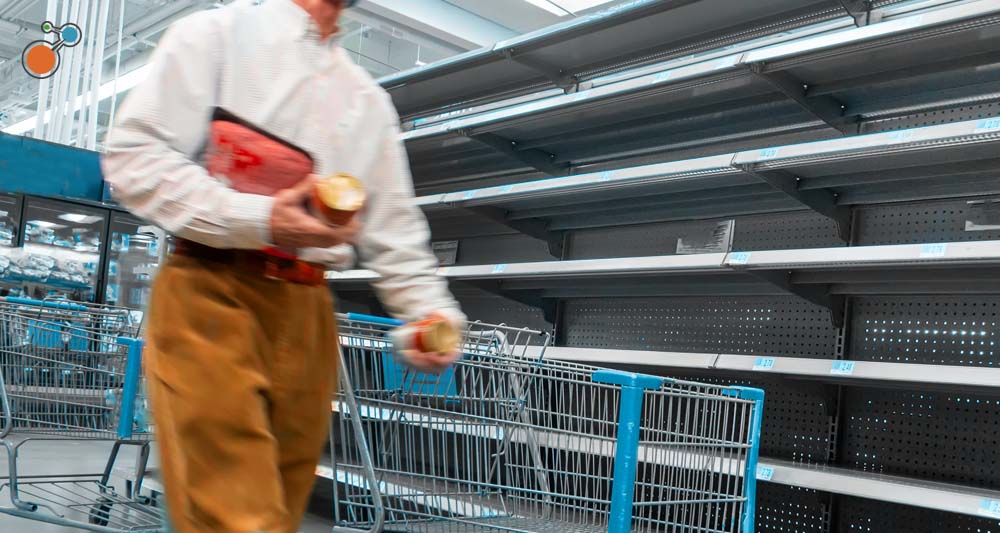Most businesses didn’t anticipate having to simultaneously handle so many disruptions in supply chain, stemming from the combined impacts of an ongoing pandemic, a severe crunch for talent, and Russia’s invasion of Ukraine.
Pandemic-driven shortages are still in full swing. New COVID outbreaks in China are slowing the flow of goods into the U.S. The ongoing mass exodus of supply chain and logistics workers continues to make it difficult for companies to keep up with demand. And then there’s Russia’s invasion of Ukraine and the economic sanctions from Western countries, which are driving up global logistics costs, lead times, and shortages.
Based on past experience, the odds of any one of these risk events happening are fairly low. And the odds of all of these major risk events happening at the same time would seem to be infinitesimally low. But the past few years have taught everyone a thing or two about how interconnected risks really are. The reality is that every big risk event makes you more vulnerable to any subsequent event, which amplifies the damage and disruption.
Why are Supply Chains Disrupted?
Europe is facing its worst migrant crisis since World War II as Ukrainian refugees flee to Poland and other neighboring countries. The rippling economic effects could cause even more disruptions in supply chain. The prospect of troublemaking cyberattacks is also becoming more likely. Ransomware attacks are targeting manufacturers’ supply chains, threatening to cripple already strained operations – and even undermine national security.
At the same time, an uptick in damaging extreme weather and other climate-related events are threatening supply-chain resilience. Coastal flooding from to rising sea levels, for instance, can lead to port closures, facility shutdowns, and other logistical challenges.
3 Steps to Avoid Disruptions in Supply Chain
No matter what risk events lie in wait, there are ways to lessen the potential impact and speed your response time. Here are three steps you can take today to bolster your supply-chain resilience.
 Boost supply-chain visibility.
Boost supply-chain visibility.
Incomplete, scattered, or out-of-date information can leave you blind to looming threats and flat-footed when a disruption in the supply chain hits. Companies often work with an array of procurement and enterprise resource planning (ERP) systems, each home to different pieces of supplier, product, and transaction data. These disparate technologies limit your view of the supply base and cripple your ability to make fast and confident decisions.
Trustworthy data is, of course, table stakes for effective supply-chain risk management. But the real advantage comes when you bring together all your supply-chain data – product quality, contracts, on-time delivery performance, supplier financial and cyber health, ESG metrics, and more. With everything in one platform – that has relationship mapping capabilities – you get deep insight into supplier performance, potential risks, and the impact of each partner on the organization. If a supplier is struggling financially, for instance, you can instantly gauge your risk exposure and quickly pivot before that supplier causes irreparable damage to your business.
 Model various scenarios.
Model various scenarios.
If a major hurricane shuts down several key ports, how severely would your supply chain be disrupted? How quickly could you detect and respond to a cyberattack on your supply-chain operations? Could you handle both events if they happened at the same time? If you aren’t confident in your organization’s ability to withstand coinciding disruptions, now is the time to take stock of your status and make the necessary changes.
Scenario planning is an invaluable tool to up your preparedness game. Play out various potential risk scenarios to understand the impact each would have on your organization. Assess your ability to simultaneously respond to multiple events with appropriate mitigations. It’s critical to have the ability to look beyond routine risk exposures and proactively prepare for more disruptive events with bigger abnormalities.
 Diversify your supply sources.
Diversify your supply sources.
COVID-19 highlighted the drawbacks of heavily relying on a far-flung network of suppliers. Even still, companies’ reshoring efforts have been slow, and many supply chains are still dependent on distant sources.
Supply-chain resilience hinges on having a diverse group of suppliers in your portfolio ready to tap in the event that your primary relationships can’t deliver. The ability to immediately activate an alternative supply source, possibly closer to home, can protect the flow of goods in the face of port shutdowns, pandemics, geopolitical issues, or other major risk events.
The Interplay of Risks Causing Disruption in Supply Chain
Supply-chain hiccups are inevitable – especially with the increasing interplay of major risk events. Today, it’s the continuing pandemic, talent shortage, and war. Next time it will likely be a completely different set of coalescing risks. But one thing is clear: There will be more disruption. Build up your risk management capabilities now so you’re ready for whatever disruptions in supply chain come next.
For more on exposing hidden risks, download our whitepaper, The Hunt for Hidden Risks. And expand your view of risk with Riskonnect’s Integrated Risk Management software solutions.




